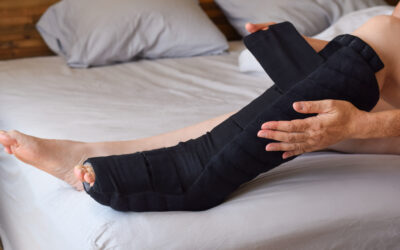Lower back pain is a common issue that affects millions of people worldwide. While there are various treatments available, massage therapy is an effective and natural approach to alleviate discomfort and improve overall well-being. In this blog post, we will explore how massage therapy helps with lower back pain, the benefits it offers, and what you can expect from a massage therapy session.
Understanding Lower Back Pain
Lower back pain can be caused by various factors, including muscle strain, poor posture, herniated discs, arthritis, and more. It can range from mild discomfort to severe pain, impacting daily activities and quality of life. Massage therapy offers a holistic approach to addressing these issues by targeting the underlying causes and promoting healing.
Benefits of Massage Therapy for Lower Back Pain
-
Pain Relief
- Muscle Relaxation: Massage therapy helps relax tight muscles, reducing tension and spasms that contribute to lower back pain.
- Endorphin Release: The body releases endorphins during a massage, which act as natural painkillers and mood enhancers.
-
Improved Circulation
- Increased Blood Flow: Massage therapy improves blood circulation to the affected area, promoting the delivery of oxygen and nutrients to the muscles and tissues.
- Reduced Inflammation: Enhanced circulation helps remove metabolic waste and reduces inflammation, aiding in the healing process.
-
Enhanced Flexibility and Range of Motion
- Stretching Tight Muscles: Massage techniques stretch and lengthen tight muscles and connective tissues, improving flexibility and range of motion.
- Joint Mobility: Regular massage therapy can help maintain and improve joint mobility, reducing stiffness and enhancing overall function.
-
Stress Reduction
- Relaxation: Massage therapy induces relaxation, reducing stress and anxiety that can exacerbate lower back pain.
- Improved Sleep: The relaxation benefits of massage can also improve sleep quality, which is crucial for healing and recovery.
Types of Massage Therapy for Lower Back Pain
-
Swedish Massage
- Techniques: Uses long, gliding strokes, kneading, and circular movements to relax muscles and improve circulation.
- Benefits: Ideal for overall relaxation and stress reduction, helping to alleviate muscle tension and pain.
-
Deep Tissue Massage
- Techniques: Focuses on deeper layers of muscles and connective tissues, using slow, firm pressure.
- Benefits: Effective for chronic pain and muscle knots, addressing underlying issues contributing to lower back pain.
-
Trigger Point Therapy
- Techniques: Targets specific trigger points or knots in the muscles, applying focused pressure to release tension.
- Benefits: Helps alleviate pain and discomfort caused by tight knots and muscle spasms.
-
Myofascial Release
- Techniques: Involves gentle, sustained pressure on the myofascial tissues to release restrictions and improve movement.
- Benefits: Enhances flexibility and reduces pain by addressing fascial restrictions.
What to Expect During a Massage Therapy Session
-
Initial Consultation
- Health History: The therapist will take a detailed health history to understand your condition and any underlying issues.
- Assessment: They may perform a physical assessment to identify areas of tension and pain.
-
Customized Treatment Plan
- Personalized Approach: Based on the assessment, the therapist will develop a customized treatment plan tailored to your needs.
- Goals and Preferences: You can discuss your goals and preferences, such as the desired pressure level and focus areas.
-
Massage Session
- Comfort and Privacy: The therapist will ensure you are comfortable and maintain your privacy throughout the session.
- Techniques and Adjustments: The therapist will use a combination of techniques and adjust the pressure as needed to target specific areas and provide relief.
-
Post-Massage Care
- Hydration: Drink plenty of water after the session to help flush out toxins released during the massage.
- Rest and Recovery: Allow your body time to rest and recover, avoiding strenuous activities immediately after the massage.
Conclusion
Massage therapy is a powerful and natural method for alleviating lower back pain. By relaxing muscles, improving circulation, enhancing flexibility, and reducing stress, massage therapy addresses the root causes of pain and promotes overall well-being. If you’re struggling with lower back pain, consider incorporating massage therapy into your treatment plan. Consult with a qualified massage therapist to develop a personalized approach that meets your specific needs and enhances your quality of life.


